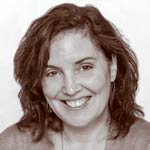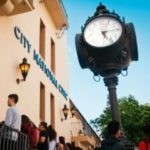
Last September, when more than 9,000 beekeepers, researchers, and honey traders descended on Daejeon, South Korea, for Apimondia 2015, the 44th International Apicultural Congress, two groups of outsiders — a few dozen people in all — were among them. And they had all taken a crash course in beekeeping before they arrived.
As Apimondia’s usual attendees sampled honey, talked about colony-collapse disorder, and exchanged beekeeping knowledge, the two groups — one each from Minneapolis and Montreal — set up booths in the Daejeon Convention Center, shook lots of hands, and talked up their respective cities. At the close of Apimondia 2015, each hoped they would be the one chosen to host the same program four years later.
“Everyone seemed excited to see us there, because the conference hadn’t been to the United States since 1967,” said Nathan Hermiston, director of destination sales for Meet Minneapolis, whose colorful booth at Apimondia 2015 was the culmination of an 18-month-long bid for Apimondia 2019. Also vying to host the 2019 meeting was a 15-person team from the Palais des congrès de Montréal, whose booth was set up elsewhere at the congress.
 At the close of the program, more than a hundred delegates would decide on the destination for Apimondia 2019. “So it wasn’t just our presentation that was important, it was the whole week there,” said Jocelyne Perron, CMP, manager of business development for the international market for the Palais des congrès de Montréal. “We had to show the other members who we are, what we were able to accomplish.”
At the close of the program, more than a hundred delegates would decide on the destination for Apimondia 2019. “So it wasn’t just our presentation that was important, it was the whole week there,” said Jocelyne Perron, CMP, manager of business development for the international market for the Palais des congrès de Montréal. “We had to show the other members who we are, what we were able to accomplish.”
After years of intense research, brainstorming, team building, and number crunching, the stakes were high for both Minneapolis and Montreal. But there could only be one winner.
BUILDING BUZZ
Based on Apimondia’s history, the competition in Daejeon was almost symbolic. The convention’s roots stretch back to 1897, when the First International Apicultural Congress convened in Brussels with 636 attendees — robust numbers for a turn-of-the-century trade conference. The first congress held outside of Europe was in Quebec, Canada, in 1924; it wasn’t until 1967 that the beekeepers would again swarm outside of Europe, in College Park, Maryland — the only time the group has met in the United States.
Beekeepers are now organized under the umbrella of the International Federation of Beekeepers’ Associations (aka Apimondia), which alternates its biannual convention between Europe and other parts of the world, so knowledge from diverse locales can be shared. (Apimondia 2017 will be held in Istanbul.) “Every day in beekeeping is a school day,” Philip McCabe, president of Apimondia and a third-generation beekeeper, said from his home in Drogheda, Ireland. “You’ll talk to somebody, or you’ll speak with somebody, or you’ll see something. And then you’ll hit yourself: Why didn’t I think of that before now? [Apimondia] is, in essence, a scientific conference run by scientists for beekeepers who are not scientists.”
Apimondia both accepts and solicits bids from prospective destinations up to six years before a congress. Shortlisted destinations attend the congress four years ahead of when they hope to host it, to plead their case directly to voting delegates. With the entire world to choose from, the rotation can be long. “Montreal [applying] in some respects surprised me a little bit, because [the congress] was in Vancouver in 1999,” McCabe said. “That means Canada [would have] it twice in that number of years, which would be unusual.”
 Meet Minneapolis first learned about Apimondia in early 2014, when leaders in the American Beekeeping Federation (ABF) approached the destination about bidding on the 2019 congress. “They explained that there was a disconnect between the domestic beekeeping community and the international beekeeping community,” Hermiston said. “Their objective was to bring this meeting back to the United States and re-engage domestic beekeepers with the international world, and their angle was that the United States had not hosted since 1967.”
Meet Minneapolis first learned about Apimondia in early 2014, when leaders in the American Beekeeping Federation (ABF) approached the destination about bidding on the 2019 congress. “They explained that there was a disconnect between the domestic beekeeping community and the international beekeeping community,” Hermiston said. “Their objective was to bring this meeting back to the United States and re-engage domestic beekeepers with the international world, and their angle was that the United States had not hosted since 1967.”
After doing some initial research, “it made a ton of sense [for us] to go full steam ahead with it,” Hermiston said. An ideal citywide conference for Minneapolis is between 10,000 and 15,000 attendees, and the region boasts a wealth of beekeeping resources, including the University of Minnesota Bee Lab.
First, however, Meet Minneapolis had to wait for the ABF and the Eastern Apicultural Society — Apimondia’s U.S. members — to choose a potential host city between the three they were considering: Minneapolis, Orlando, or Washington, D.C. In spring 2014, they finally settled on the City of Lakes. “We cannot imagine having a better place than in the middle of our American honey-production belt,” reads the ABF’s letter of commitment to Apimondia.
 Like many DMOs and venues, Meet Minneapolis and the Palais des congrès de Montréal field hundreds of leads each year. “I try to develop, every single year, about 60 or 70 international associations,” said Perron, who, with three other people, focuses on the international market. As in Minneapolis’ case, that process sometimes means initially competing against other domestic destinations for the right to bid. “[With Apimondia], there were a few other Canadian cities that were interested,” Perron said, but leaders in Canada’s beekeeping community eventually chose Montreal to compete.
Like many DMOs and venues, Meet Minneapolis and the Palais des congrès de Montréal field hundreds of leads each year. “I try to develop, every single year, about 60 or 70 international associations,” said Perron, who, with three other people, focuses on the international market. As in Minneapolis’ case, that process sometimes means initially competing against other domestic destinations for the right to bid. “[With Apimondia], there were a few other Canadian cities that were interested,” Perron said, but leaders in Canada’s beekeeping community eventually chose Montreal to compete.
While putting together proposals for national associations “is fast, it’s now, it’s today,” Perron said, “[international bids] are complex, and they take a long time. I always say it is like an elephant. You’re not going to eat it all in one bite or you’re going to die. You have to eat the elephant in small bites. This is the international market.”
For Perron, the first bite often involves finding a local champion — someone in a sector related to the conference who can help shape a proposal and advocate for the city with their peers. “The destination cannot do it alone. The specialty, to me, is always as important, if not more, than the destination, the country. We had to come up with, ‘Okay, in the beekeeping industry, what makes us strong?’” Perron said. “[A local contact] is one of the key factors. You can’t get just anybody — it has to be someone who can make a difference, who is instrumental in the winning process. I started knocking on the right doors, the right doors being my local champions — namely, someone from the Université Laval.”
That was how Pierre Giovenazzo, a biology and physiology instructor at Laval University, in Quebec City, as well as a renowned apicultural research scientist, became integral to Montreal’s proposal — and part of a local organizing team that included other researchers, the private sector, regional beekeeping associations, the Canadian Honey Council, and even the Canadian federal government. In addition to preparing a formal bid, the team created interactive elements, including a website outlining the city’s science and cultural strengths, and a video with drone footage to be shown to Apimondia 2015 attendees in Daejeon.
 Nearly 1,000 miles away, in Minneapolis, a similar process was unfolding. Meet Minneapolis’ bid drew on elements of the destination’s “City by Nature” brand, and also highlighted the region’s beekeeping resources. “Our objective was to show that we were a universally rounded city,” Hermiston said. But the proposal wasn’t just about Minneapolis. As the only competing U.S. destination, Minneapolis represented the entire country, in a way. So Meet Minneapolis reached out to other CVBs for material.
Nearly 1,000 miles away, in Minneapolis, a similar process was unfolding. Meet Minneapolis’ bid drew on elements of the destination’s “City by Nature” brand, and also highlighted the region’s beekeeping resources. “Our objective was to show that we were a universally rounded city,” Hermiston said. But the proposal wasn’t just about Minneapolis. As the only competing U.S. destination, Minneapolis represented the entire country, in a way. So Meet Minneapolis reached out to other CVBs for material.
“I partnered with a couple of domestic CVBs, to get some B-roll footage,” Hermiston said, “because, yes, we’re promoting Minneapolis and ultimately the conference would come to Minneapolis, but really, [Apimondia attendees] were voting for the United States. So we reached out to our colleagues in St. Louis and got some shots of the Arch, of San Francisco, of New York [City], D.C., and Orlando. My colleagues in St. Louis were checking in on us to see how we were doing, so it was kind of fun to sell more than Minneapolis.”
The resulting bid book wove together images of beekeeping and information about “honeybee science” with pictures of U.S. destinations, as well as the backstory of U.S. beekeeping and ideas for pre- and post-conference tours. “There was this sense of camaraderie,” said Alicia Schindle, who was convention marketing manager for Meet Minneapolis during the bid process, and now is channel marketing manager at Concur, “because there was no way that anyone else in the United States could bid on this project for 2019, and so there was no reason not to support our bid.”
Meet Minneapolis’ team also poured their hearts and imagination into a four-day site visit with Apimondia leaders, including McCabe. The group visited the University of Minnesota Bee Lab and the Minnesota Landscape Arboretum, and even took in a Minnesota Twins game.
“We have a huge beekeeping community here, with hives on skyscraper rooftops and small nonprofits that really support the beekeeping community, and laws that make it more accessible for people to keep bees,” Hermiston said. “We highlighted all of those aspects to the visitors, to show that yes, we have the hotels, and yes, we have the convention space, but we have a community of beekeepers that really are passionate about this.”
A JOURNEY ABROAD
In September, the teams from Montreal and Minneapolis descended on Daejeon for Apimondia 2015. Each group set up booths — Minneapolis outside the convention center, due to limited space, and Montreal on the exhibition floor — where they talked to delegates and pressed their cases. “At that point, the hay was in the barn,” Hermiston said. “There really wasn’t a whole lot more to do but to not completely screw up. That really was the only objective once we were there.”
Perron approached those five days strategically. “We had to be very present on the exhibition floor,” she said. “Don’t forget, the members are voting, so we’re lobbying. It’s not just our presentation that’s important — it’s all that week there. We have to show the other members who we are, what we’re able to accomplish. We were about 15 people down there, and there was always a presence at the booth. We were going to the other booths, and introducing ourselves, and asking them, what can we do for you? It’s always, what can we do for you?”
Because Apimondia 2015 was in Asia, there were sizable contingents from Eastern Europe, Russia, and the Middle East. Both Montreal and Minneapolis held receptions for delegates, then made their final cases during short presentations to the congress. “We had only 10 minutes, and our objective was to address the members’ challenges and goals,” Perron said. Even today, she is still proud of her team’s presentation. “Our video — it was magical.”
THE FINAL VOTE
After Apimondia’s closing awards and ceremony came the moment of truth: the vote on which destination would host Apimondia 2019. Both the Montreal and Minneapolis teams watched as the decision was announced from the stage: “Canada…,” read the announcer, pausing for a few seconds as he held a piece of paper aloft: “77.” Applause erupted. Montreal had won the vote, 77 to 38.
“It had never happened to me before, but I was so emotional because of all the work the team had put in together,” Perron said. “Alone, we win games, but with intelligence and good teamwork, we win a championship. That’s exactly what we did. This was one very long shot, and it was a beautiful, beautiful win, where every single person had something to do with it.”
For the Minneapolis team, disappointment gave way to analysis as they tried to understand why they might have lost. “I think Canada had been more engaged with Apimondia for the past couple decades than us; we were kind of the new kids on the block,” Hermiston said. “When the vote came out, we could piece together who voted where. Turkey and Russia had the largest voting blocks. Them, along with the Middle East, sort of sealed our fate.”
Hermiston is alluding to the possibility that some delegates may have chosen Canada because of onerous perceptions of U.S. immigration and customs — something McCabe observed as well. “Canada is somewhat easier to enter than the U.S.,” McCabe said. “The main reason that Canada won it, and this was accepted by the American delegation, is many of the people who were voting in Korea have difficulty at the moment entering the United States because of visas.”
Whether that is reality or perception, Minneapolis has taken the loss in stride. “We really were on equal footing, but the perception is that Canada is easier to get into than the United States, and that’s ultimately and officially what people kind of were seeing,” Hermiston said. “Perception is reality, and overcoming people’s perceptions when you have such a small window of time — I don’t think there was anything we could have done differently to change the outcome of the vote.”
Hermiston is proud of the connections that Minneapolis made during the experience, with both other CVBs and the destination’s own research community. “I got to understand and learn about some of the scientific departments [at the University of Minnesota],” he said, “who the big players are, and really strengthened those relationships. Minneapolis is one of the best, if not the best, beekeeping cities in the country. Hopefully, some future partnerships can assist us with bringing other conventions [to Minneapolis], where they can be speakers.”
In Quebec, the elation over winning Apimondia 2019 is evident throughout the beekeeping community. “We won the Apimondia Montreal 2019 bid!!!!!” the Nova Scotia Beekeepers’ Association wrote on its website. “It was a tremendous experience and a great team effort.”
Perron agrees that it was ultimately a powerful group effort that scored one for the City of Saints. “We came up with a theme: Honeybees were sustainable agriculture,” she said. “It was truly a superb experience. And we won. It was super.”
While there might be a lot of uncertainty in the beekeeping world itself — especially pertaining to colony-collapse disorder, which refers to the mysterious disappearance of worker bees from bee colonies — two things are certain for Apimondia: It will be held in Montreal in 2019, and cities will compete mightily to host future congresses. “If you bring 10,000 people to a city, wherever it is, you’re going to leave behind a fair bit of money,” McCabe said. “Countries really like to have it.”
And underlying the economic benefit of hosting such a large conference is a public service of sorts: facilitating the exchange of knowledge about one of the world’s most important natural resources, especially as worker bees continue to disappear. “Without the bees,” McCabe said, “we’d be in serious trouble.”
The Geneva Conventions
 Here’s how one DMO — the Geneva Convention Bureau — made radical changes to its sales structure in order to bid more strategically on congresses.
Here’s how one DMO — the Geneva Convention Bureau — made radical changes to its sales structure in order to bid more strategically on congresses.
It would seem to follow that once Anja Loetscher joined the Geneva Convention Bureau as director nearly nine years ago, she would make room bookings her top priority. First, because DMOs typically use room nights booked by meeting groups as a yardstick for their success, and second, because Loetscher came to the bureau with a background in hotel sales, having served as vice president of sales for Europe, the Middle East, and Africa at Kempinski Hotels.
But as a newcomer to both the Geneva Convention Bureau and the DMO world in general, Loetscher was less interested in room nights than in the actual economic impact her bureau had. She was perplexed by the fact that it was “calculating room nights all the time,” she said, “because one room night can be $1 or $1,000.”
Moreover, once she settled into her role, it became increasingly apparent to her that “because we all work with the business side of Geneva,” the bureau should be closely aligned with the city’s economic development organization (EDO) and its chamber of commerce rather than fall under its tourism office.
To press her case, Loetscher focused on communicating “with the local politicians,” she said, “to get them to understand what we’re doing and how much we’re contributing to the economy.” In addition, she brought government officials to large conferences taking place in Geneva, so they could see firsthand not only attendees’ economic impact on the city, but the level of knowledge and expertise they shared at those congresses devoted to the particular industries and disciplines that are key to Geneva’s growth.
“For us it was interesting, because the government is seeing the importance of congresses and conferences coming into our city,” Loetscher said, “and while they sometimes have to travel to try to meet people” from around the world who are influencers in the knowledge clusters Geneva specializes in, “here we are bringing them into our city.”
A ‘CRAZY IDEA’
The stronger the case Loetscher made for the convention bureau to be recognized as an essential part of Geneva’s economy and business development, the more she realized that the way her sales team went to market seeking meetings business — with each member responsible for specific geographic regions — didn’t further that cause.
In 2013, she had the “crazy idea” to completely overhaul her sales team’s structure. Instead of marketing by market, “covering the U.S. or whatever,” they would “work with the [knowledge] clusters that are important to Geneva, because then if we bring business into Geneva according to the clusters [targeted by] the EDO, we get support from that,” Loetscher said. “I believe that the convention bureau is not only about room blocks, because people book online and at the last minute. They don’t need us for that. You have to think further as the convention bureau. You cannot start now with ‘I need to book your venue with so many square meters.’ If I bring an association in, it’s a given that we have a venue and we have rooms. That is not our role anymore. We are a knowledge hub.”
To assign team members to specific knowledge clusters, Loetscher worked with Geneva Hospital — “a strong university hospital high in research” — to identify areas of specialty and research. She also looked at the business clusters the EDO focused on and matched them to “all their respective congresses.” “We had to ask ourselves, what is our specialty in Geneva?” Loetscher said. “What should we be known for? Who are we? And then find congresses. We are not just bidding for every congress. I mean, if a congress wants to come to Geneva, we are not going to say no. But we are working in a much more targeted way now to find congresses that benefit all this knowledge.”
EXPERT ADVICE
Loetscher and her team have made progress in several business-development areas, including banking. For example, the organizers for an upcoming banking congress are now working with the Geneva government to feature local finance startups in their program. That collaboration, Loetscher said, was a direct result of the convention bureau’s ongoing efforts.
The bureau’s revised sales-team structure has also enabled its members to develop better relationships with local subject-matter experts in their assigned knowledge areas. “In order to get a congress to come here,” Loetscher said, “sure, you need to find local contacts, otherwise it’s not going to work.” But those connections have “become much stronger now, because my sales team has become like specialists in those fields. If you cover cardiology, for example, you become a specialist in that field, and then you know what’s going on in that market. This is what is most interesting for the sales team — they are learning a lot. They are becoming experts in the different fields that are relevant for Geneva.”
Eventually, Loetscher hopes to share offices with the EDO and chamber of commerce. “I want us to have the same web page, I want us to share the same language, I would like us to share the activities that we do together,” she said. “If a convention comes, it’s who do you know, how can we put people together so that they can learn from each other. Unless you have the knowledge and the knowhow locally, it’s not interesting for anyone to bring their congresses here.”
According to Loetscher, the convention bureau’s future lies “in sharing the knowledge and bringing the right businesses to Geneva. Then we see how does that connect with science, how does that connect with our hospital, how does that connect with the university, and which companies connect with that locally.” Now that her team is focusing on that, “we’re flying,” she said. “We’re really flying.”
— Michelle Russell
DMO Executives on How They Bid
Just how competitive is it for DMOs that are bidding on meetings and conventions in 2016?
“I would use the word fierce — not in a fashion-forward sense, but in a dog-eat-dog type of way,” said Rachel Benedick, vice president of sales and services for Visit Denver, whose team of 30 handles thousands of leads every year for both the city’s hotels and the Colorado Convention Center. “The competition’s crazy, especially in the convention-center market. When you see the cities that are investing in their infrastructure, both from a convention-center and a hotel perspective, it’s staggering. You know they’re out selling the dream — and we all do that, depending on what stage you’re at.”
ALL ABOUT THE CLIENT
That stiff competition in turn can translate to less repeat business from groups, especially when it comes to international business. “The average citywide type of group may have had a rotation cycle that was, say, four to five years,” Benedick said. “Now it’s not unusual to see rotation cycles of 10 to 12 years, because there’s so many more options for groups. We had a great citywide here last year, in the fall of 2015, and our next opportunity to bring them back to Denver is 2028.”
From groups’ perspective, some destinations’ brand assets may begin to resemble one another — so how do they distinguish themselves? Both Denver and Columbus, Ohio, emphasize their walkability, for instance, as well as their friendliness. “[Columbus] is a smart and open community with a dynamic convention package that can fit the needs of any group,” said Angela Hammond, CASE, CTA, director of convention sales for Experience Columbus.
While that’s true, it’s also true for a few other places just like Columbus. “My philosophy has always been, for our city, you don’t sell against the competition, because let’s face it, there are a lot of really great cities out there,” Benedick said. “You need to sell to the client, so it’s really about understanding what are the hot buttons for a group. What was their most successful meeting, where was it and why, and then how can we best position Denver to be that next best experience for them?”
GOING LOCAL, STAYING LOCAL
To mine their own story, some destinations rely heavily on local resources and creative site visits. “We like to showcase the personality of the city through our members and partners, so people get a true sense of what D.C. is all about through a local perspective,” said Melissa Riley, vice president of convention sales and services for Destination DC. “The process is much more tailored than dates, rates, and space — it’s about how we can enhance the customer’s experience, and what we bring to the table that makes our destination different. Of increasing importance is showing the customer the local benefits, and their access to thought leaders and like-minded organizations in D.C. that will help them be successful.”
Local resources are also at the heart of what destinations can offer science and medical groups in particular. “It helps tremendously to have a strong local member, no matter what market — whether it’s medical, education, science, or whatever,” said Terry Kopp, director of sales for the Boise Convention & Visitors Bureau, “because they tend to know the hot buttons of every group, whether those have to do with air accessibility, what to see and do, or what the pre- and post-opportunities might be.”
Boise increasingly is using interactive and video elements in its proposals — including drone footage — while Experience Columbus has produced a series of polished videos, Hammond said, “to show Columbus’ vibrant offerings through the eyes of a first-time visitor and convention attendee.”
OUT OF TIME
Yet no matter how imaginative a destination is with its marketing, time can be a foe “The biggest thing that has changed [with proposals] is the speed to market right now,” Benedick said. “There was a day when the three-ring-binder bid book was really standard and the time frames were longer. You received an RFP, you had a month or something to get everything together and respond.
“Now, we find it’s very common right now, even sometimes with large bids, that the response deadline is 24 hours, or the end of the week. People want the nitty-gritty first. They want to know, what’s my convention-center pricing, what space do I have, what does my hotel package look like? Sometimes it’s almost backwards — you get that stuff to them, and then they say, ‘Okay,’ and then that’s when they really starting to look at the destination.”
Test Time
Earn one hour of CEU credit. Once you’ve finished reading this article, read the following material:
› International Association Meetings: Bidding and Decision-Making, an ICCA Intelligence report from the International Congress and Convention
To earn CEU credit, visit pcma.org/convene-cmp-
The Certified Meeting Professional (CMP) is a registered trademark of the Convention Industry Council.




